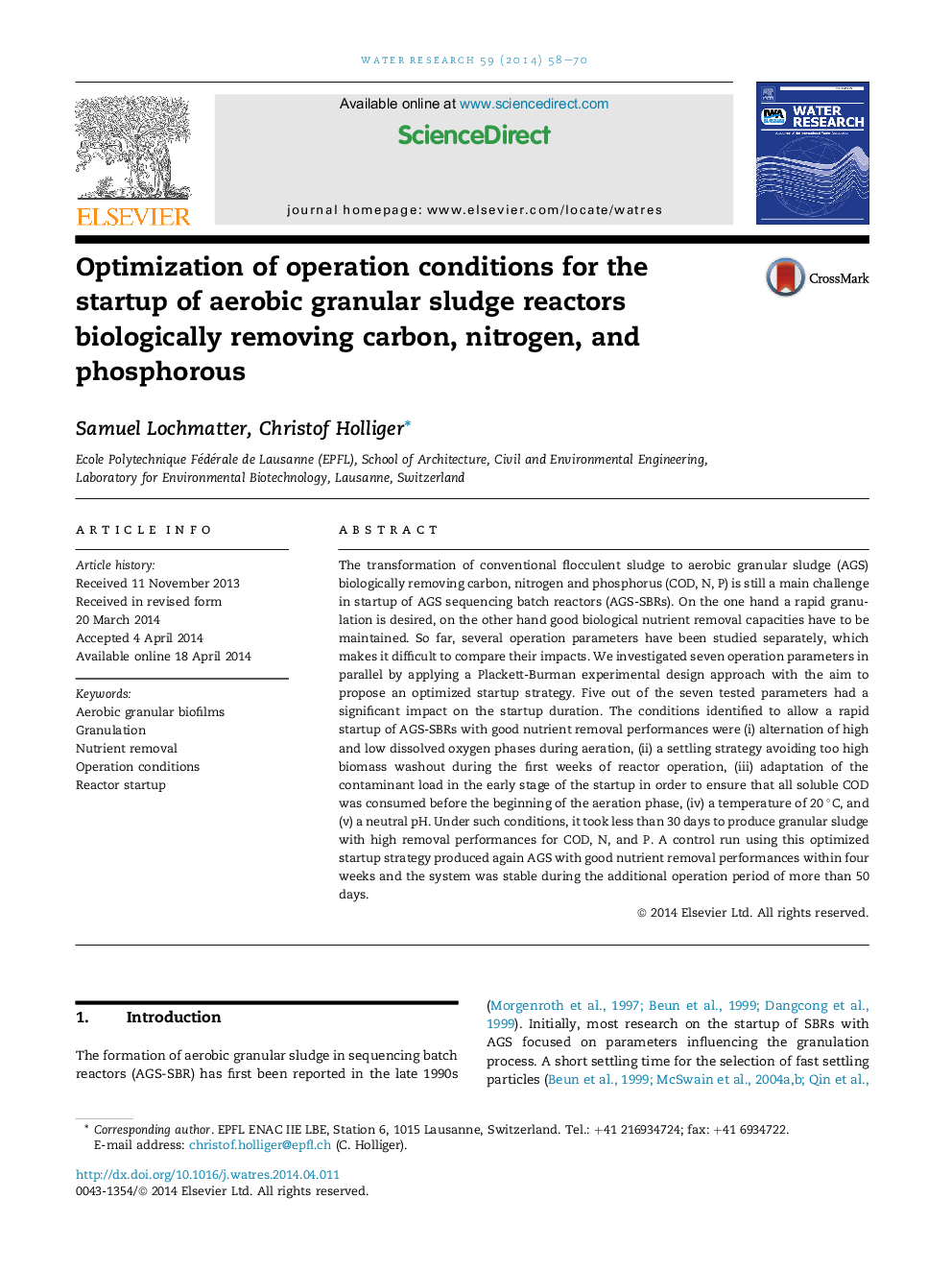| کد مقاله | کد نشریه | سال انتشار | مقاله انگلیسی | نسخه تمام متن |
|---|---|---|---|---|
| 4481526 | 1623109 | 2014 | 13 صفحه PDF | دانلود رایگان |
• Startup of aerobic granular sludge sequencing batch reactor investigated.
• Impact of seven operation parameters on startup duration tested in parallel.
• Plackett–Burman experimental design approach applied.
• Aeration, settling time, pollution load, temperature and pH had impact on startup.
• AGS-SBR startup with flocculent sludge was possible in less than 30 days.
The transformation of conventional flocculent sludge to aerobic granular sludge (AGS) biologically removing carbon, nitrogen and phosphorus (COD, N, P) is still a main challenge in startup of AGS sequencing batch reactors (AGS-SBRs). On the one hand a rapid granulation is desired, on the other hand good biological nutrient removal capacities have to be maintained. So far, several operation parameters have been studied separately, which makes it difficult to compare their impacts. We investigated seven operation parameters in parallel by applying a Plackett-Burman experimental design approach with the aim to propose an optimized startup strategy. Five out of the seven tested parameters had a significant impact on the startup duration. The conditions identified to allow a rapid startup of AGS-SBRs with good nutrient removal performances were (i) alternation of high and low dissolved oxygen phases during aeration, (ii) a settling strategy avoiding too high biomass washout during the first weeks of reactor operation, (iii) adaptation of the contaminant load in the early stage of the startup in order to ensure that all soluble COD was consumed before the beginning of the aeration phase, (iv) a temperature of 20 °C, and (v) a neutral pH. Under such conditions, it took less than 30 days to produce granular sludge with high removal performances for COD, N, and P. A control run using this optimized startup strategy produced again AGS with good nutrient removal performances within four weeks and the system was stable during the additional operation period of more than 50 days.
Figure optionsDownload high-quality image (205 K)Download as PowerPoint slide
Journal: Water Research - Volume 59, 1 August 2014, Pages 58–70
